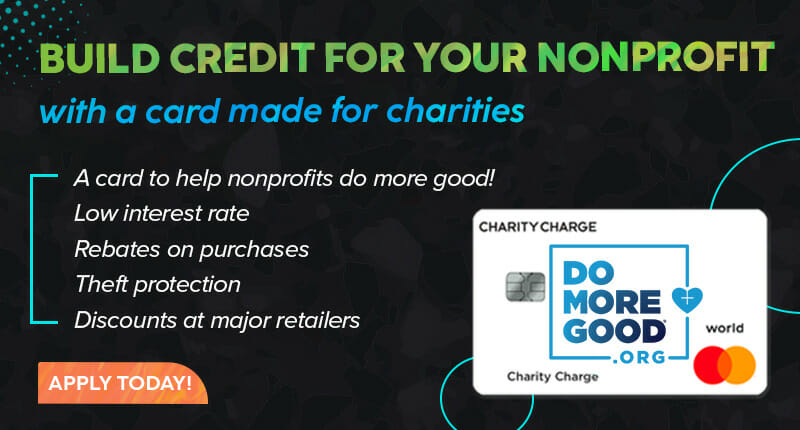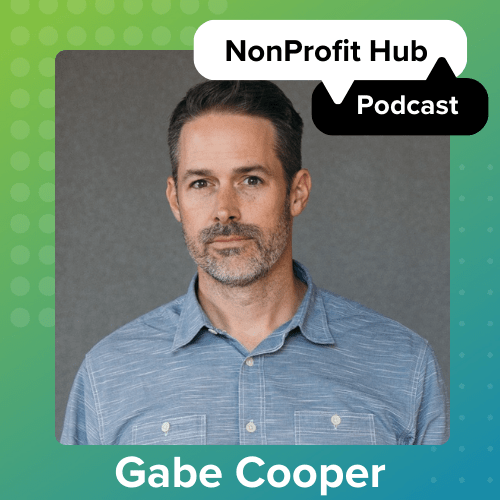Money in the bank isn’t the only indicator of financial success for a nonprofit organization. In fact, when there is money in the bank, nonprofits often overlook financial best practices that add security and longevity to their mission. Here are some often overlooked nonprofit financial best practices:
1. Build Credit for Your Nonprofit
Building credit may seem unnecessary in the formative years of your organization. However, nearly all businesses require it at some point to grow. A line of credit, mortgage, and even some grants require a strong and stable credit history. In fact, keeping a line of credit can be a security measure against lean years or unexpected situations, i.e, COVID-19.
To get started, make sure your organization uses a credit card that’s secured by your nonprofit and not an individual. Credit card companies are quick to offer small business cards to nonprofits, but read the fine print! Just because it’s a business card with your organization’s name on it doesn’t mean it’s secured by the organization. We recommend using a vendor like Charity Charge which specializes in providing credit to nonprofit organizations.
Then, Manage that Credit!
Go a step further and use your business credit card(s) for employee expenses rather than traditional reimbursement style expense reports. Did you know that the majority of employee fraud is committed through expense reports? Keep expenses flowing through one easily verified channel that also happens to help build credit. Assigning employees their own individual cards with low limits can also help reduce the risk of both fraud and overspending.
Applying for a DUNS number is also a way to build credibility and credit. Note: government contracts and grants often require this!
2. Compare Financial Reports to Your Budget
You have a budget, so use it! Comparing your organization’s financial performance to your budget on a regular basis is part of having good nonprofit financial best practices. This simple step helps identify budgeting or fundraising gaps and create a more viable budget over time. The easiest way to do this is to add a column to your profit and loss statement for your current year’s budget and reflect the progress by either showing actual dollars or the percentage of budget for both income and expenses. Depending on what accounting software you use, this may be as simple as selecting the right report to export.
Keep in mind that it’s normal for nonprofit organizations to show low numbers at times. This includes the early months of the year and the summer. Using a fundraising plan (see tip#5) helps ease the anxiety during lean months.
3. Diversify Your Nonprofit’s Funding
Let’s start with the obvious…selling t-shirts doesn’t count as diversifying your funding until it represents a significant portion of your support. Diversifying your funding doesn’t always mean pursuing earned income through product sales or a business, although eCommerce is an option more and more nonprofits explore. It could be rent income, grant support, or professional fees. However it comes in, it’s important to not rely on one channel for all of your income. Economic instability, staff changes, and even donor opinions can radically change without notice. Make sure you prepare by not having all your eggs in one basket.
4. Be Prepared for Non-Cash Support
The following is based on a true story…
Imagine it’s December 23rd and you receive a voicemail from a long-time donor. The donor explains a wish to issue a sizable gift to your organization. You immediately respond with gratitude and eagerness. You’re ready to do whatever is necessary to secure the gift. The donor is eager, too. They only need your broker account number for the stock transfer.
What? Uh oh…
Are you prepared to take stock donations? If not, the chances of getting set up on December 23rd are quite unlikely. Get prepared ahead of time so you never miss an opportunity for significant support. The cost (time and funds) to get a brokerage account setup are negligible compared to the potential gain. Nonprofit Hub even has an Ultimate Stock Gifting Guide to help you out.
Along these lines, consider getting prepared for other non-traditional support such as cryptocurrency and even vehicle donations.
5. Use a Fundraising Plan
As mentioned above, lean months are a common occurrence for nonprofits that rely on fundraising. A negative profit and loss statement makes for a sweaty situation if you forget about the seasonality of fundraising or have a board that doesn’t understand it. Help your organization plan appropriately by creating a fundraising plan ahead of creating your annual operating budget. Implement a feasibility study to determine the likely success of your fundraising.
Documenting when income is expected and anticipated ROI helps your team ensure activities and campaigns are well placed throughout the year. When it comes to nonprofit financial best practices, eliminate non-performing events and campaigns; this tool helps you do just that. Check out our Fundraising Plan template to help you get started! Note: you’ll need to copy to a new file to edit!
6. Create an Operating Reserve
Another true story…
A small nonprofit (annual revenue of less than $5M) relied on donations and income from a resale store for its operations. With an average gift size of $200, the organization relied heavily on a group of large donors that provided gifts of $20K or more at least once per year. In fact, these supporters were so loyal that the organization budgeted their gifts year-in and year out. After all, they steadily supported for over ten years. One year, two of these donors didn’t give. One of them stopped completely for their own personal reasons and the other simply forgot. The board and executive director spent at least a month discussing how to “remind” the donor of the needed gift and reengage the one that willfully stepped away.
At the same time, it snowed. Heavily. There was so much snow that the resale store did record-low sales for one week and ended up closing three days of the following week for the safety of its volunteers.
The executive director was facing a deficit unlike anything the organization had faced before. The drastic blow to cash flow would have repercussions that lasted nearly three months. Thankfully, the organization had 18 months of cash reserves. While the board often argued about “how much is too much,” they were all thankful to be prepared for the crisis.
The historical nonprofit financial best practice was to hold three months of operating expenses in reserve. Following the pandemic, many organizations recognized the necessity for a larger reserve with a year to eighteen months becoming typical. Each organization should consider their funding diversity and operating expenses before creating a cash reserve policy.
Going Forward with Nonprofit Financial Best Practices
Ready to take your nonprofit financial knowledge to the next level? Consider signing up for the Essentials of Nonprofit Accounting course!








